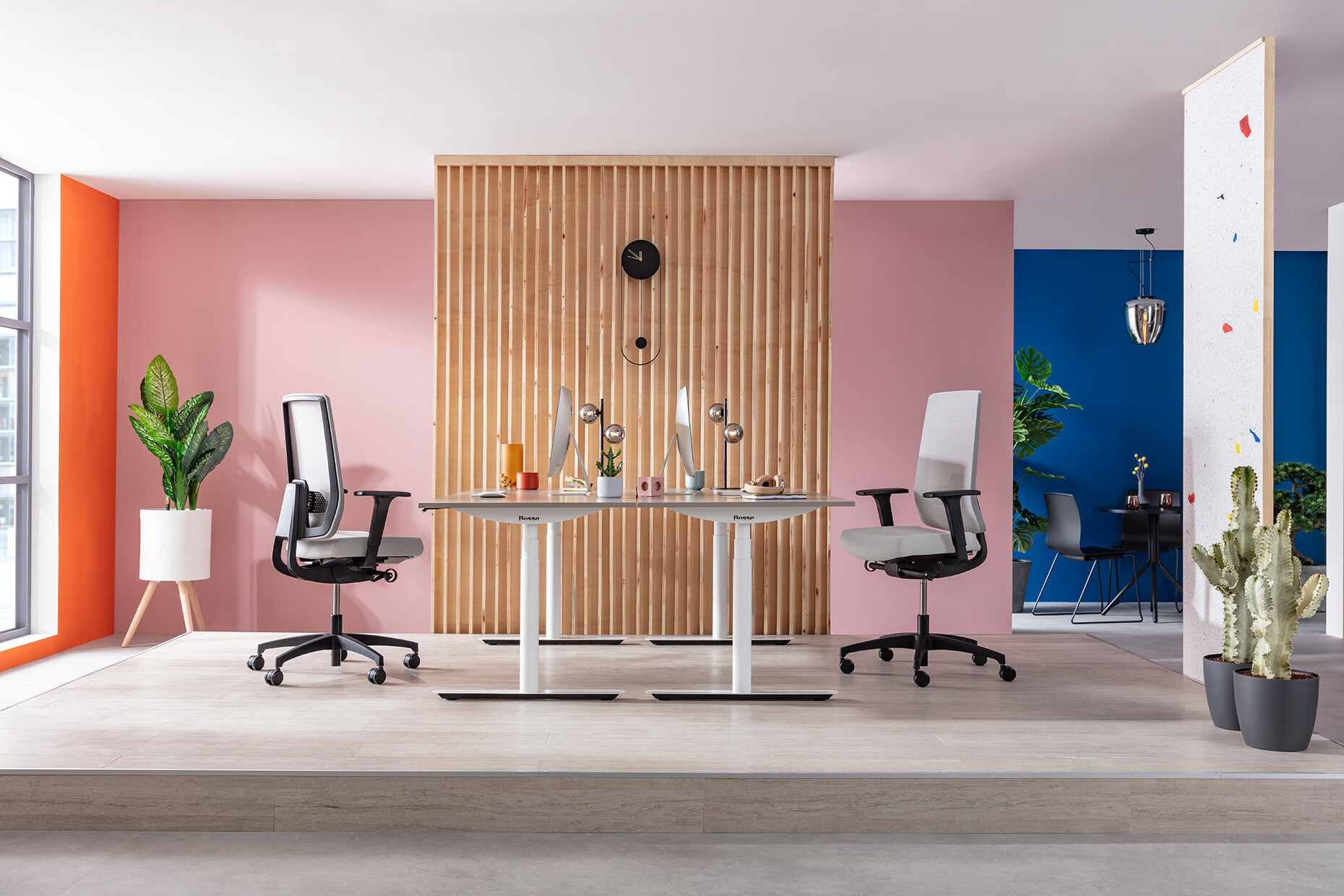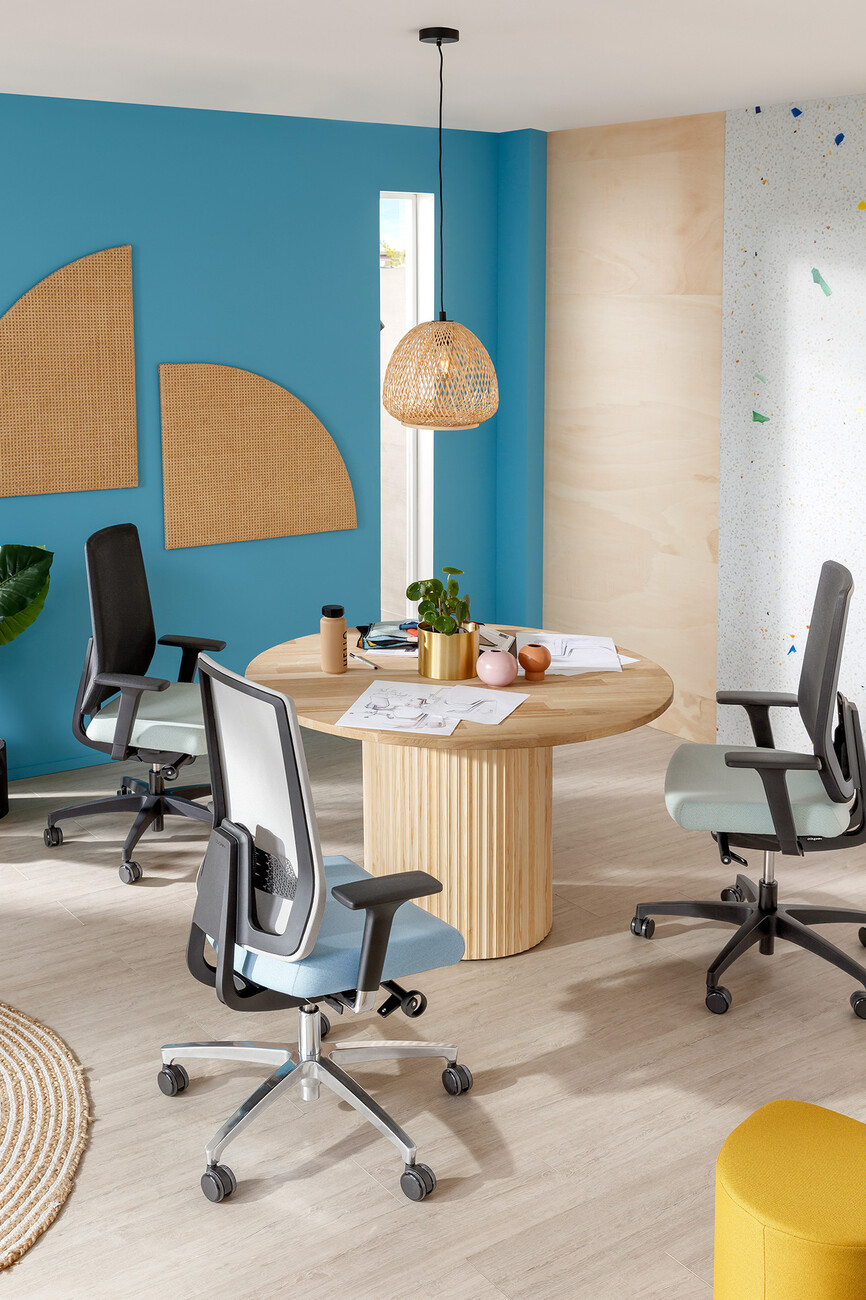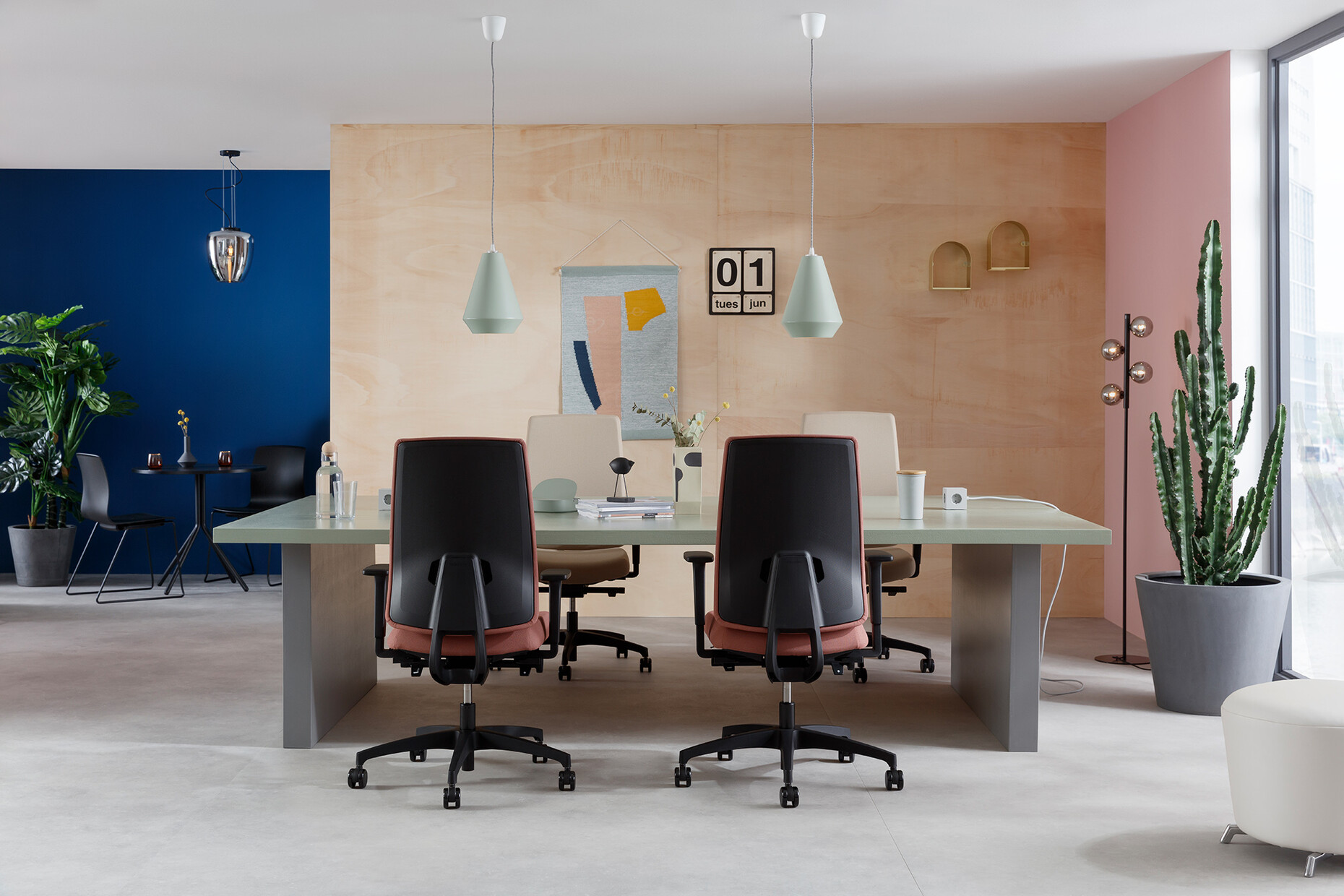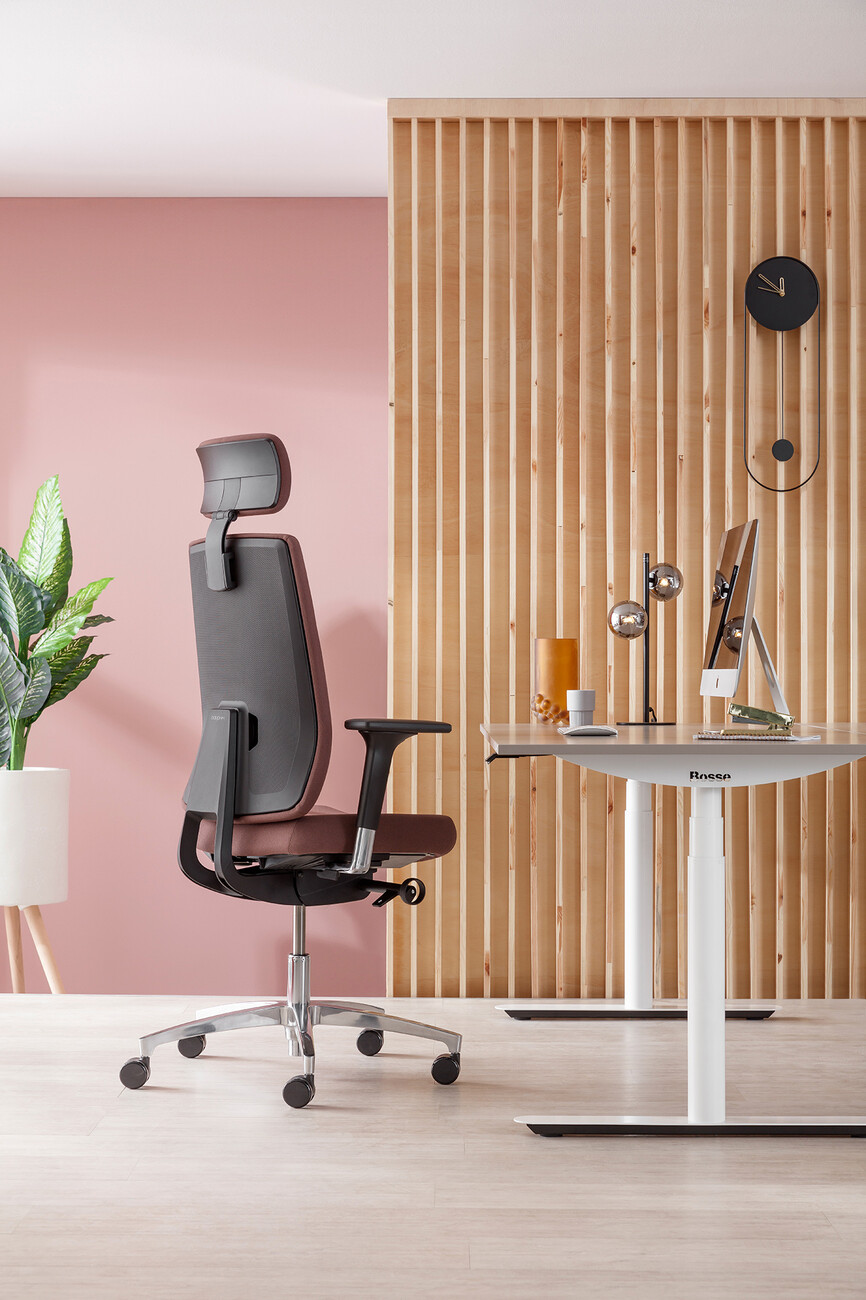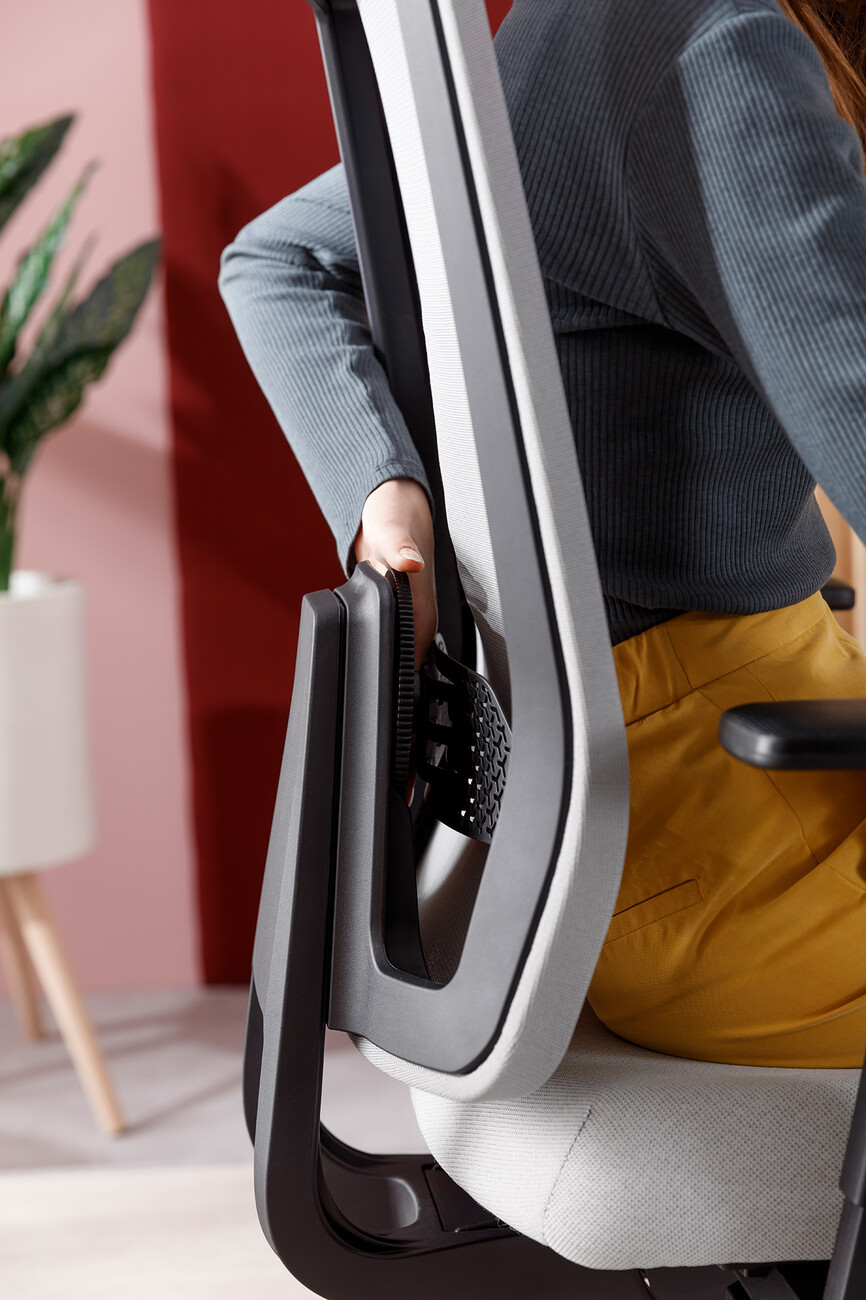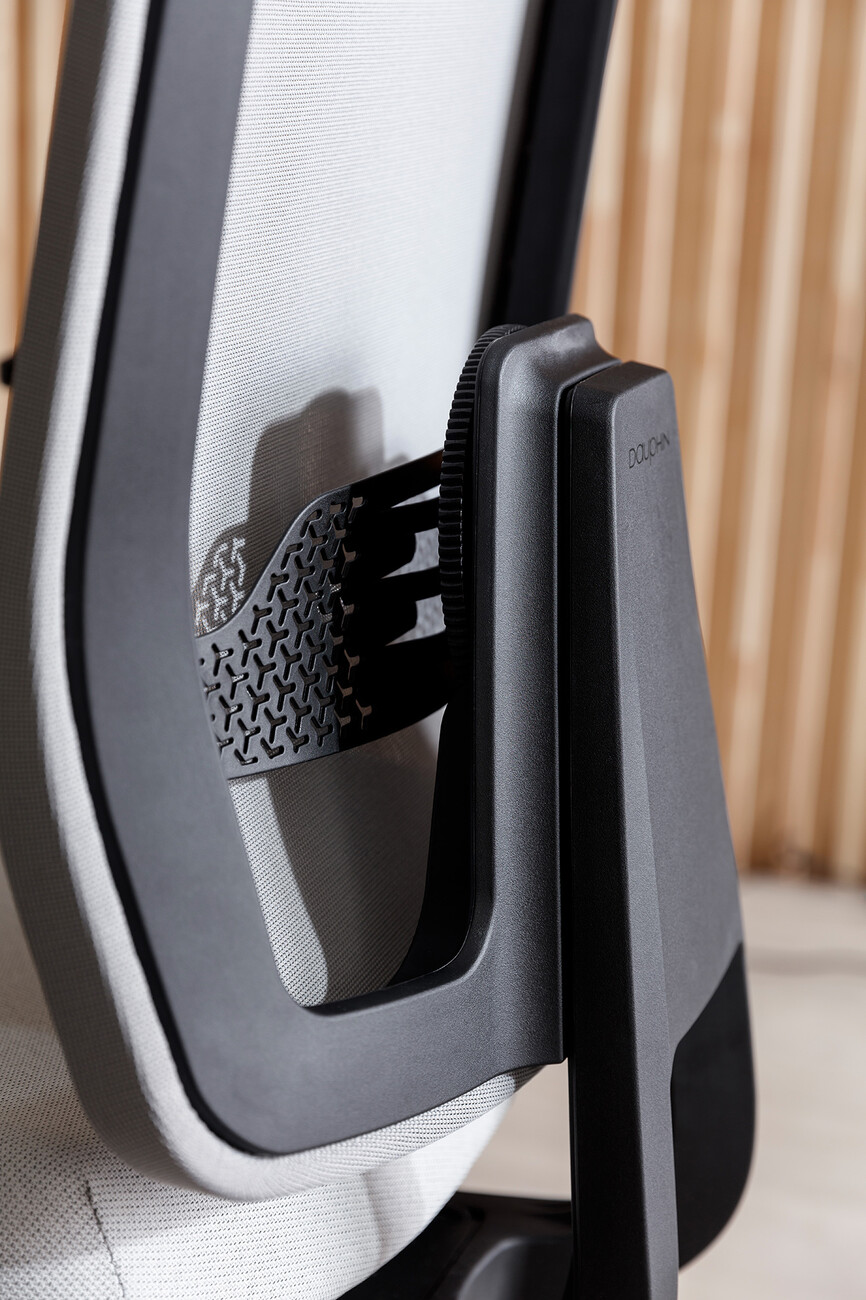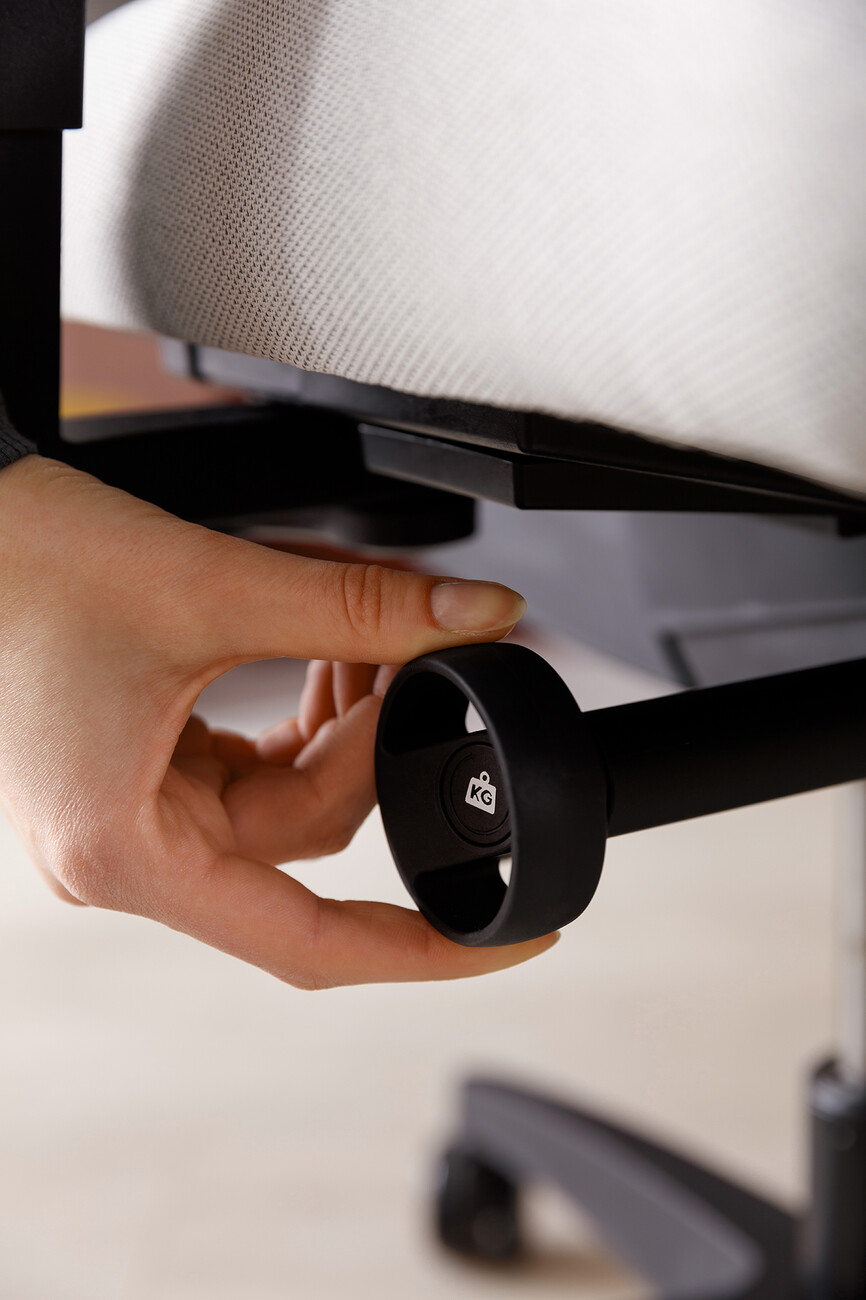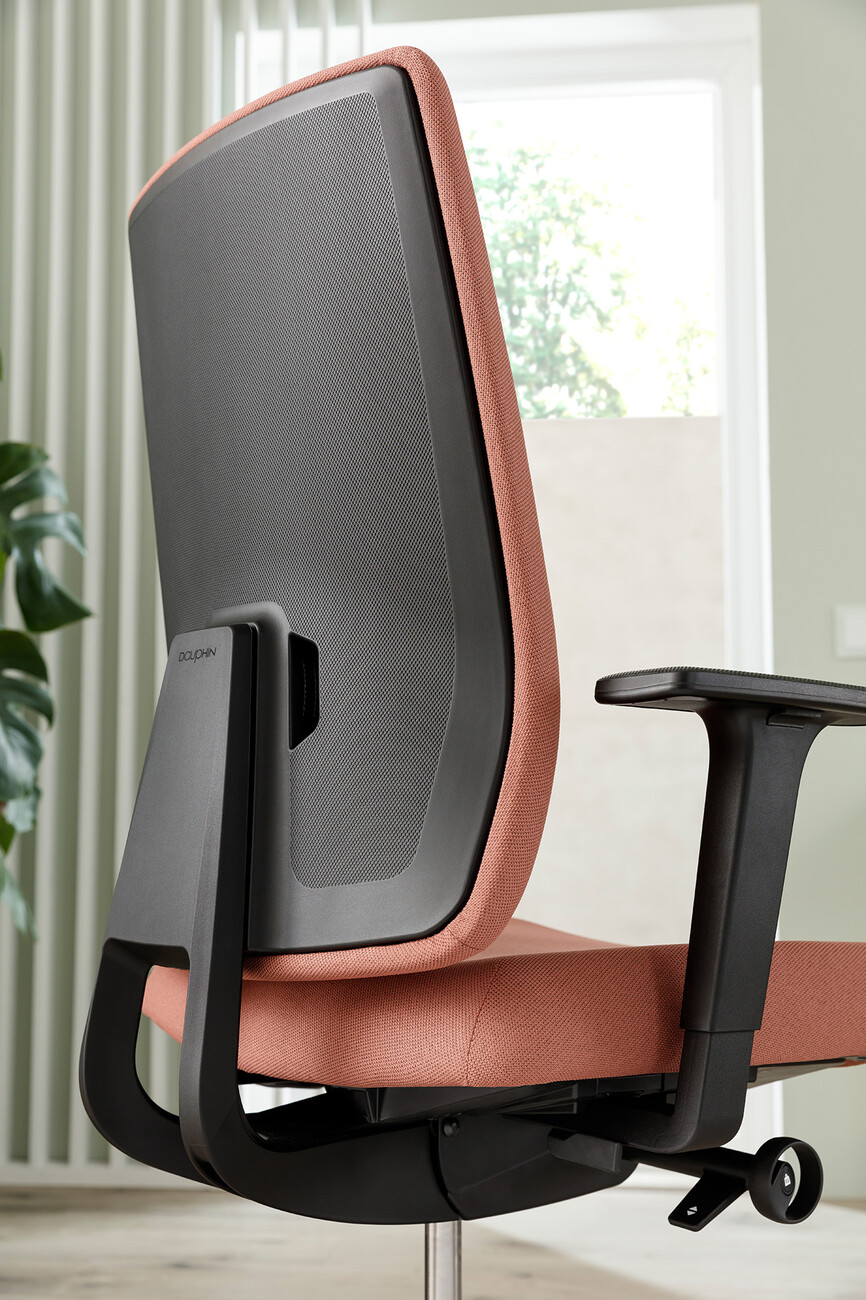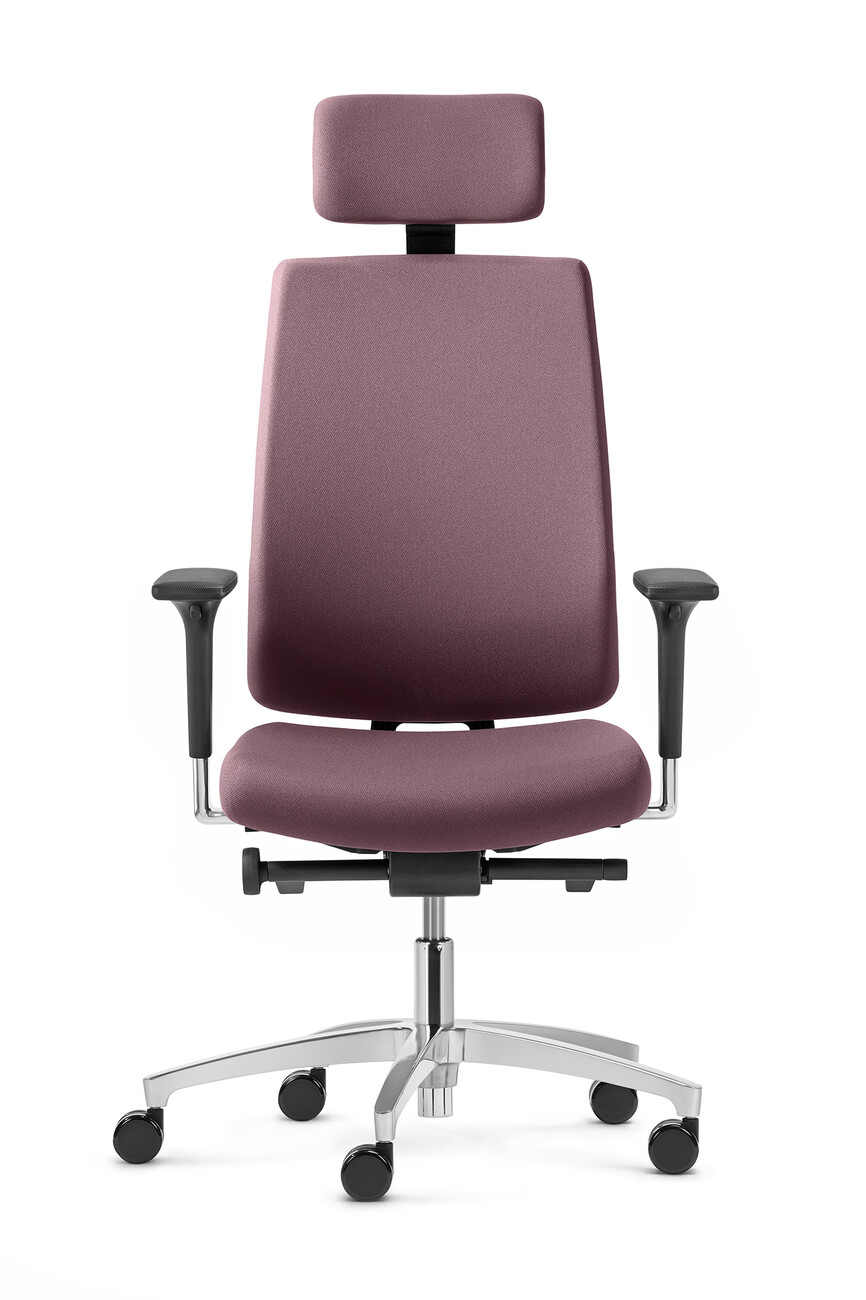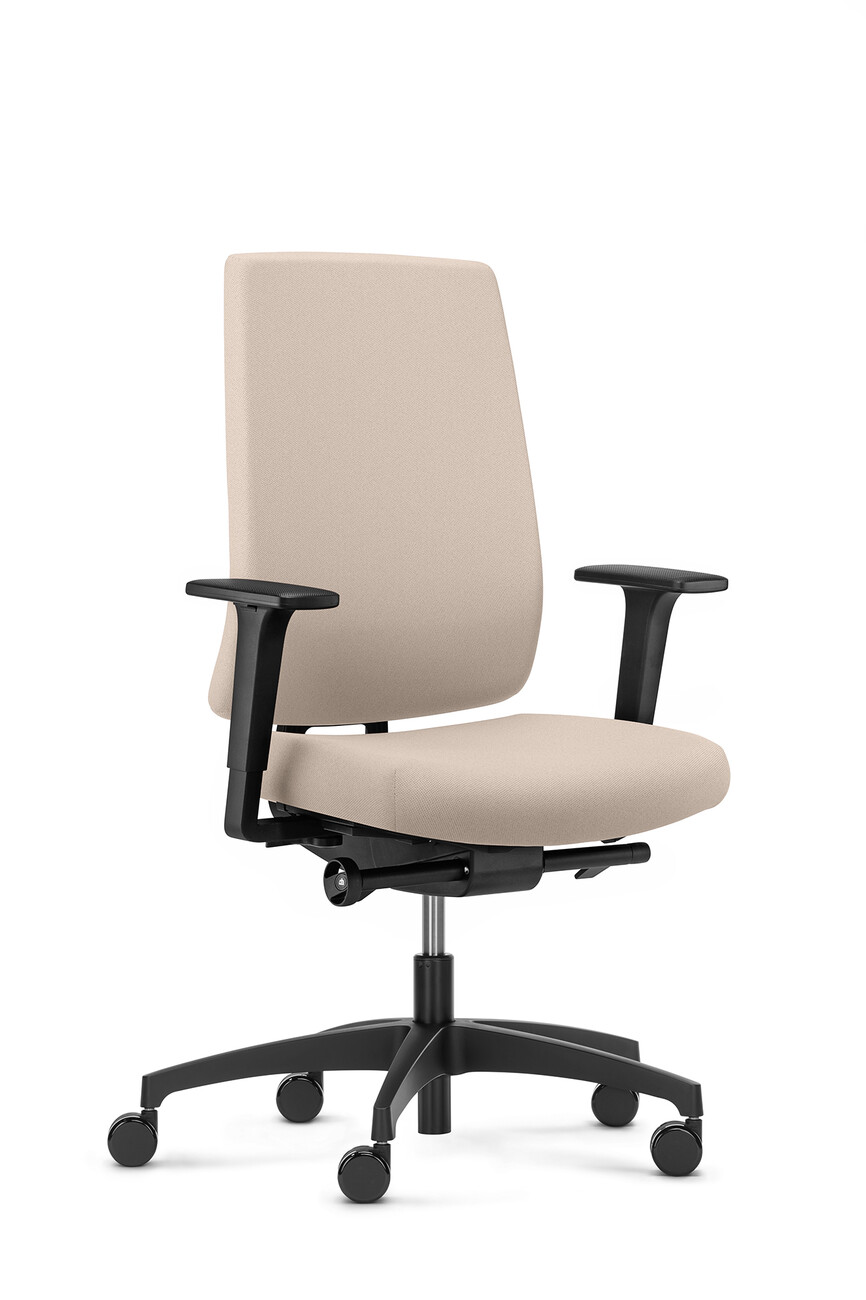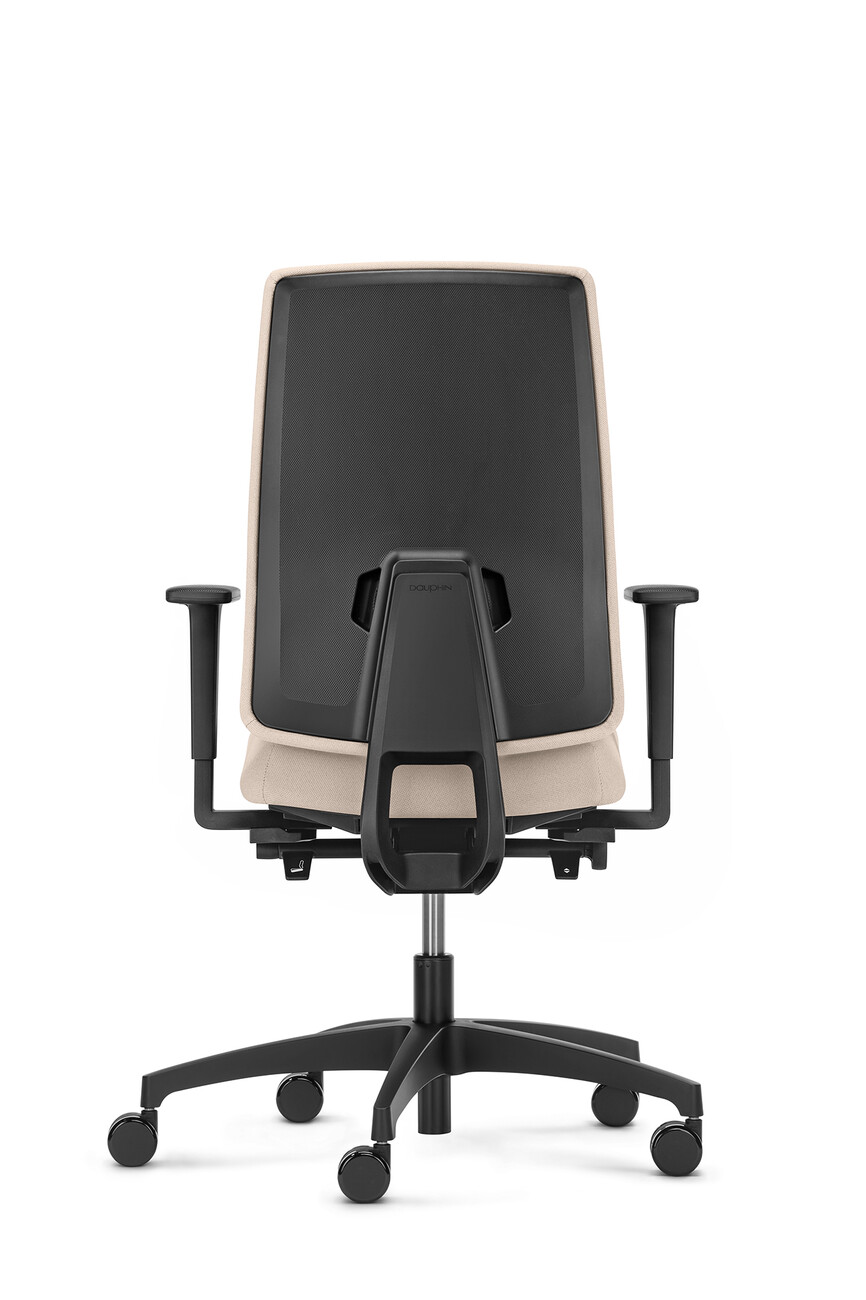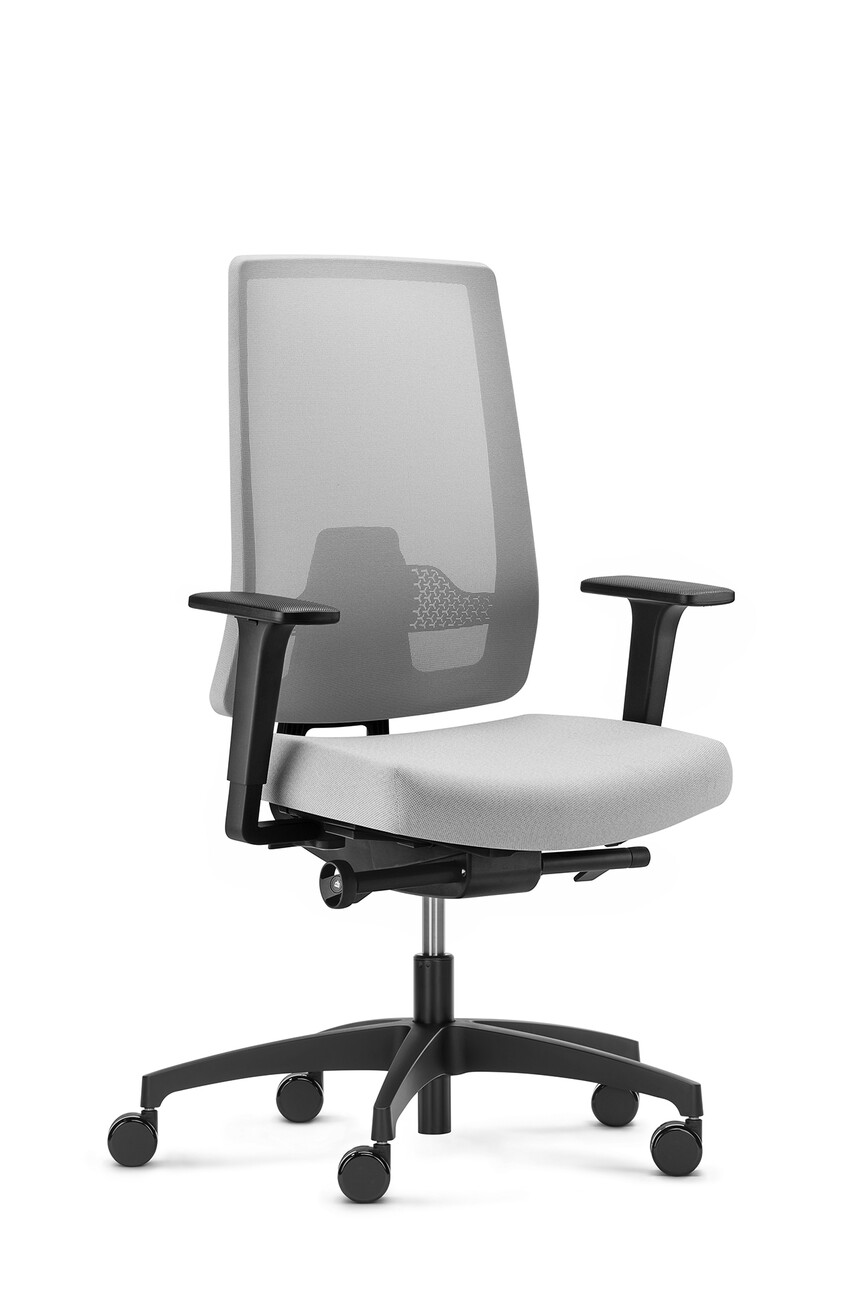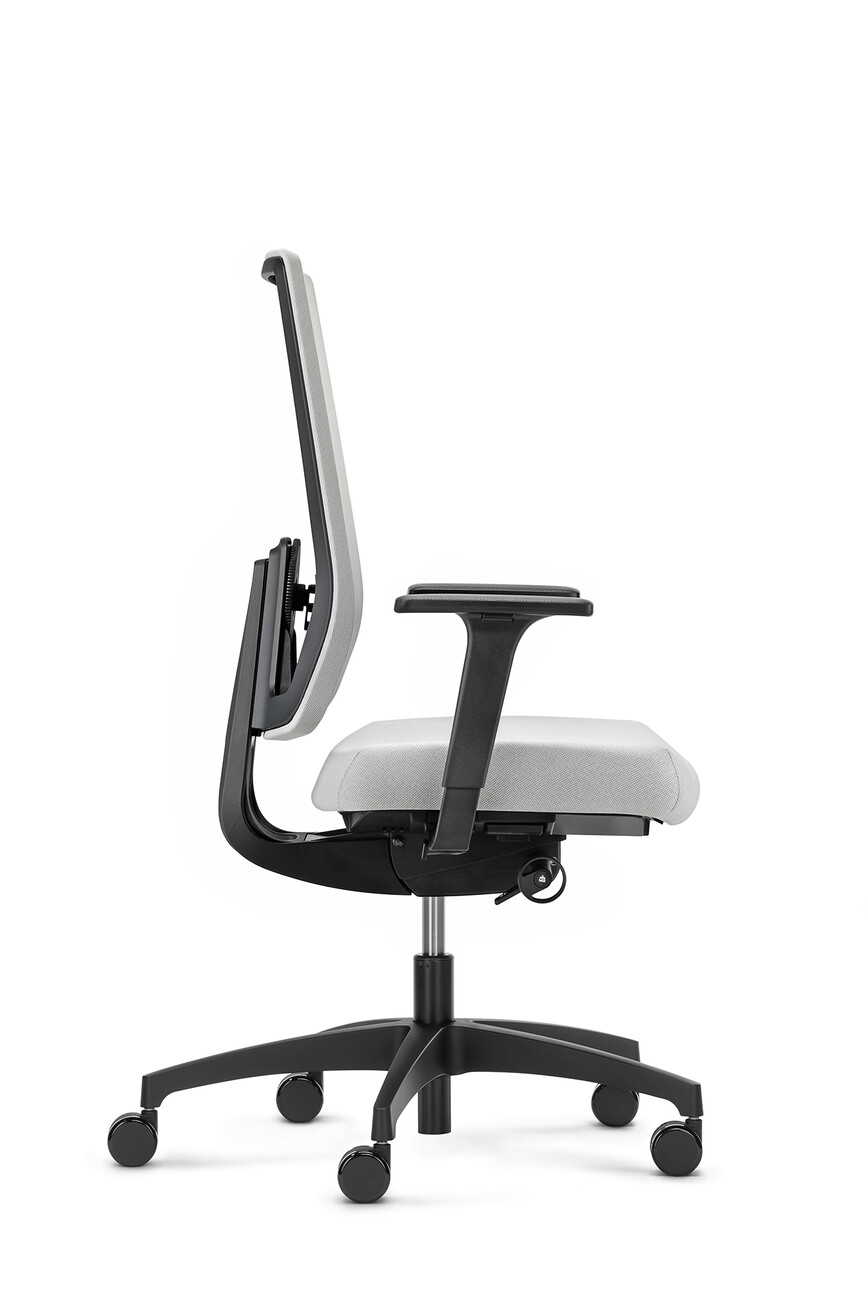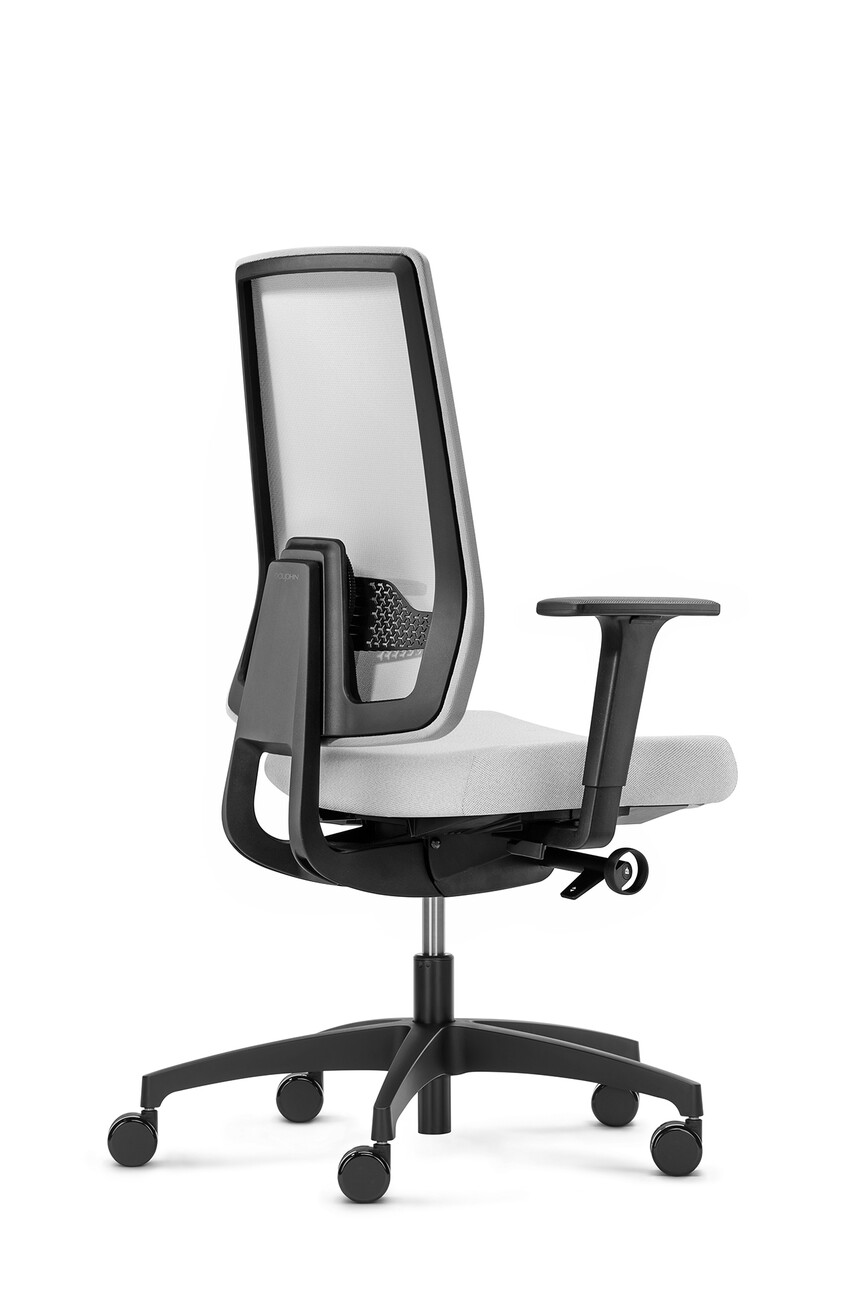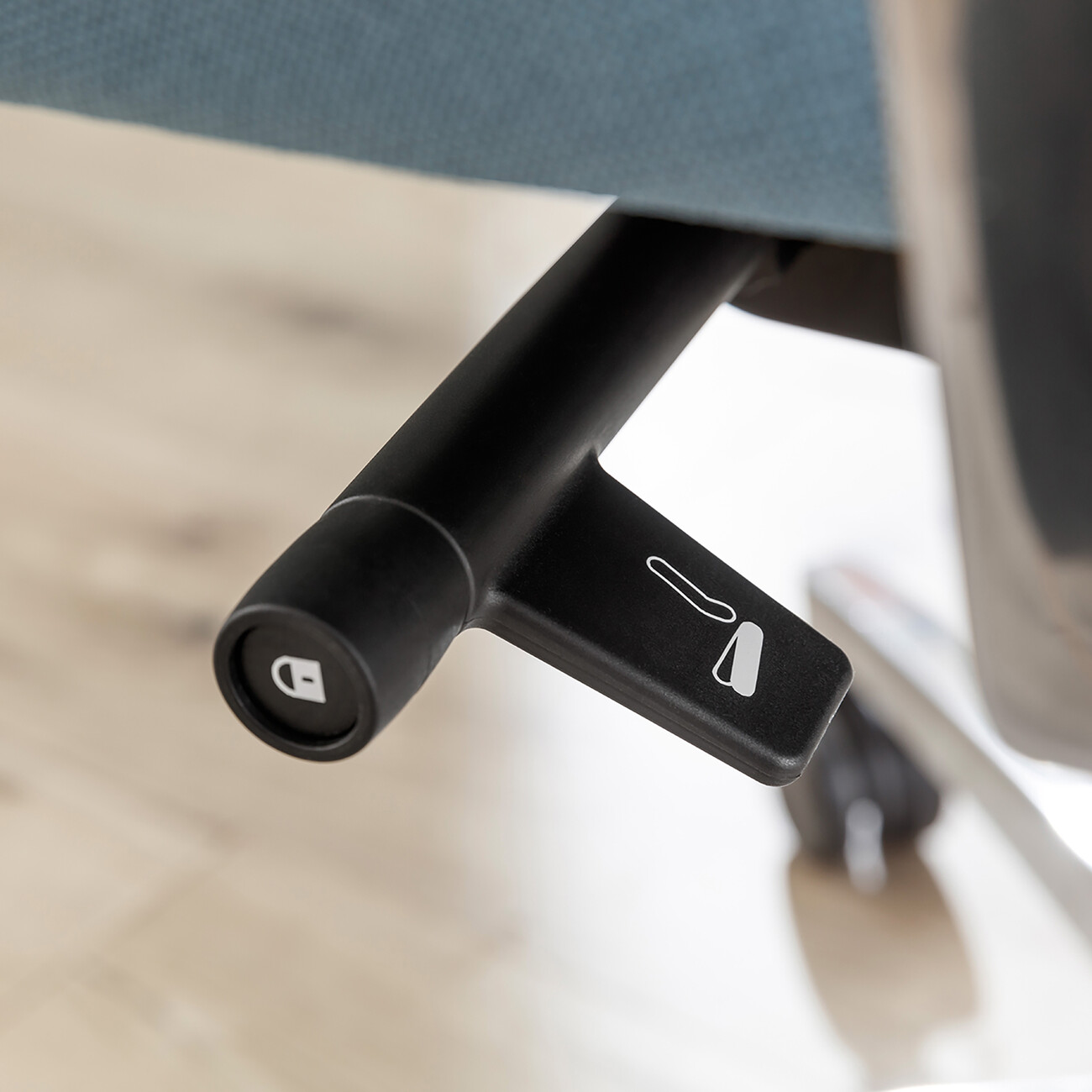A chair for everyone
Rüdiger Schaack: We wanted to design a chair that suits everyone – and not solely from an ergonomic perspective, but also in design terms. That means it shouldn’t be too conspicuous and should slot easily into different interiors.
Does that apply only for the office environment or for the home office, too?
Rüdiger Schaack: The topic of working from home naturally played a role, which is evident particularly in the material choices for "Indeed". For example, there are two different backrest options –with a mesh fabric cover or with a closed plastic shell, which we call "Operator". In addition, there is a wide choice of cover materials ranging from pure wool to cavalry cloth and felt-like fabrics. "Indeed" is also available in a broad selection of colors, and all in all this certainly adds up to an enormous design scope both in the office and at home.
Can you tell us a bit more about the design details?
Rüdiger Schaack: "Indeed" is designed for the entry-level segment, which is why a lot of the parts are made from plastic. The chair design responds to this with various surface structures that are applied to the plastic, which makes the individual elements seem very soft and velvety and thus further enhances the chair. Basically, the main goal of the design was to transform functional elements into design details. To me as a designer, it was particularly important that the chair has a consistent design language. One example of this is the transition from the backrest bar to the backrest frame, which is solved in a form-fitting way but also lends the chair a certain dynamism that is nevertheless not overly expressive. In addition, both the mesh backrest and the plastic one share features, since the texture of the mesh fabric is also imprinted on the closed plastic shell. There are also pictograms I designed that are printed on the chair to assist with operation.
The notion of sustainability was a key factor in the design concept. How do you reconcile that with the use of plastic?
Rüdiger Schaack: All the components of "Indeed" are pure plastic types and thus recyclable. What’s more, the majority of components were sourced within the region. To ensure they can be broken down by type, for example, we made sure that nothing was glued. Instead, everything slots together and can therefore be easily dismantled.The chair can also be shipped partially disassembled, with no tools then required for assembly since the pieces slot together by means of form-fitting and plug-in connections. In addition, the plastic parts used are molded in such a way as to use the least amount of material possible, which incidentally means that the chair is relatively light. That was the challenge: designing a lightweight swivel chair that uses minimal resources but is stable and meets the functional requirements.
"Indeed" is on average 20 percent lighter than comparable chairs. How did you manage that?
Rüdiger Schaack: By experimenting, building prototypes, and then testing them in a test laboratory. At the same time, we always carry out analyses in advance regarding the distribution of forces, which illustrate whether an assembly will function or not and highlight where things need to be improved. In the case of "Indeed", this led to ribbing in the backrest, which braces the chair and helps to save material.
How difficult was it to realize the chair in structural terms?
Rüdiger Schaack: At Dauphin we work in project teams composed of people from the areas of product design, engineering and project management. By handling everything in an interdisciplinary way and in-house, we ensure channels are very short and this helps to bring about close and constructive exchange. Questions of feasibility can be answered quickly this way, as was the case with "Indeed", which meant the technical implementation was ultimately problem-free.
